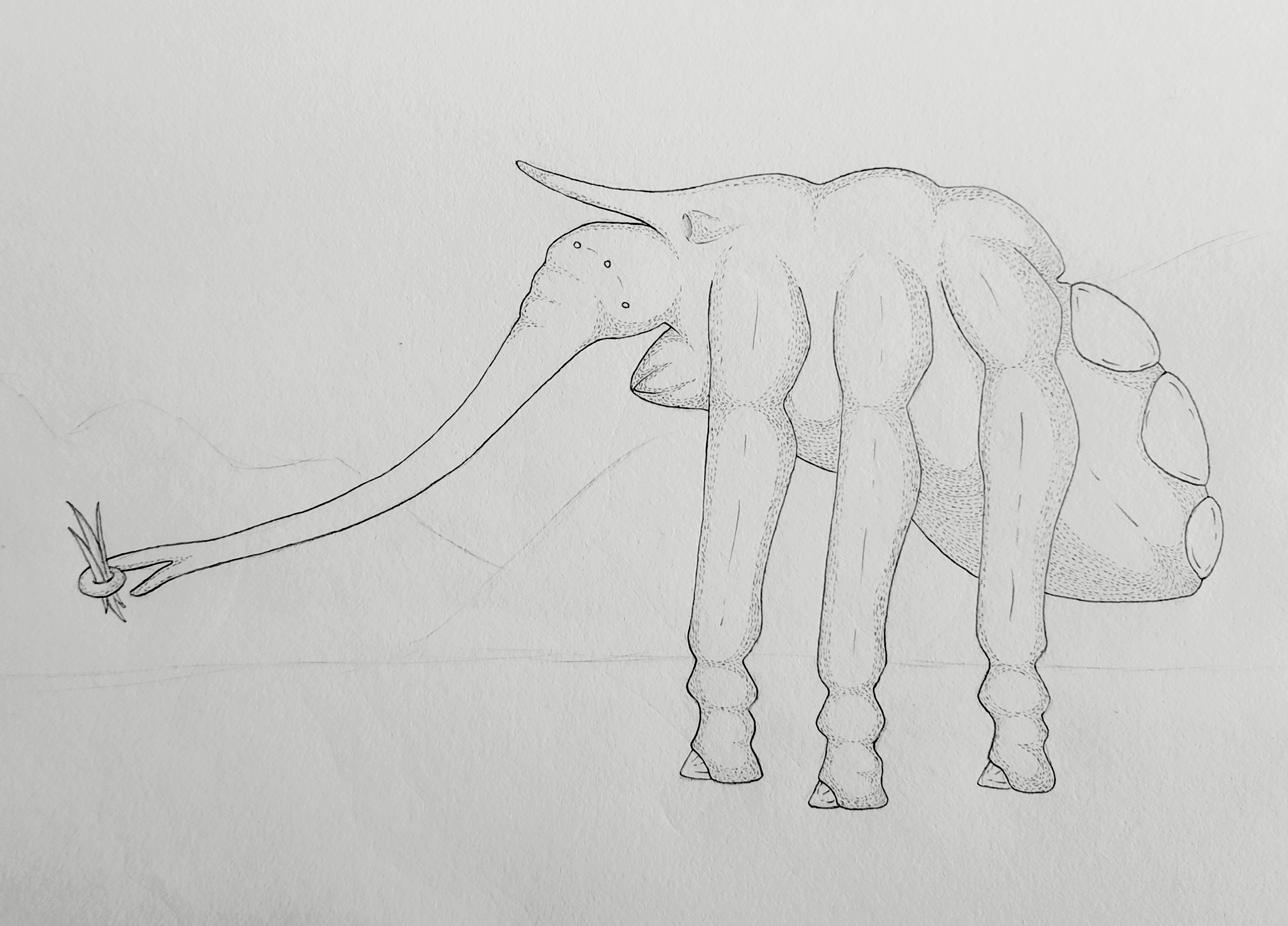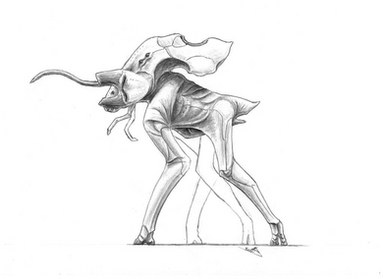HOME | DD
 Sorroxus — Stilopod Megasitisus
Sorroxus — Stilopod Megasitisus

#alien #aliencreature #aliendesign #biosphere #creature #creaturedesign #traditionalart #specbio #specevo #exobio #stithopod
Published: 2021-07-08 14:01:33 +0000 UTC; Views: 1045; Favourites: 10; Downloads: 0
Redirect to original
Description
scientific name: stilopod megasitisus
common name: lesser titan walker
average height: ~10-12’
average weight: ~15,000 lbs
common body coloring: deep red with light-grey fatty humps
The Stilopod Megasitisus (lit. mega-feeding pillar-foot) is a species of (the genus) stilopus, a large and diverse clade of the titanobrachidae family, a family with two living genera, with the stilopodus being the first and the genus procerapus being the second. The family itself is highly diverse in spite of only two extant genera, and is spread all throughout the two continents, although none exist on any of the Endonese islands. The S. Megasitisus can be found grazing on the open steppe similar to the baropods, however, unlike the baropods, they are also large enough to feed on the treetops, which means they are generalist herbivores.
The S. Megasitisus is a very social creature, often living in herds anywhere from twenty to thirty in count, and are led by not one, but two thatriarchs, often sharing the responsibility of herd leadership. The herd is also incredibly protective of each and every member, regardless of whether or not any given member is sick or in shape. They display an impressive amount of emotional intelligence, and are often observed to soothe one another with their trunks. They are also one of the few stithopods to protect young babies and immature members of its kind. This kind of behavior, which is similar to non-blood tied parenting, is rare in many stithopods due to their spore-related means of reproduction. However, when S. Megasitisuses wish to reproduce, they will do so in special “birthing plains,” and will watch over the eggs, and will then watch over the young babies.
Diet for the S. Megasitisus consists partly of the many lampaphytes and the rest of the “leaves” of the tree tops. They prefer to keep themselves either fixed in the plains or on the borders of the forest. Rarely do they wander into the actual forests. Regardless, they can be found slowly and peacefully grazing, using their trunk to rip up large batches of lampaphytes. Their trunk possesses a small “finger” at the end, which is primarily used to get a better grasp on branches, although it is also sometimes used for simple manipulation.
The S. Megasitisus also sometimes fall to predation, which mostly comes from the Theronychus Tyrannos, the only predator large enough in the Concordian west coast to pose a threat to the S. Megasitisus. Yet, because of their large size, they are often able to avoid predation just by being large, but when they do fall victim, it is mostly either an old and weak individual or a young individual who has not yet reached full size. One of their main defenses are their fatty humps, which are so thick they can withstand a piercing jab from the T. Tyrannos, and another form of defense is their trunk itself. Similar to the local baropods, the S. Megasitisus will sometimes use the end of its trunk as a pulverizing club.
Reproduction is standard, although the spores are always birthed in special “birthing plains” made by digging with the large and pointed hoof.























